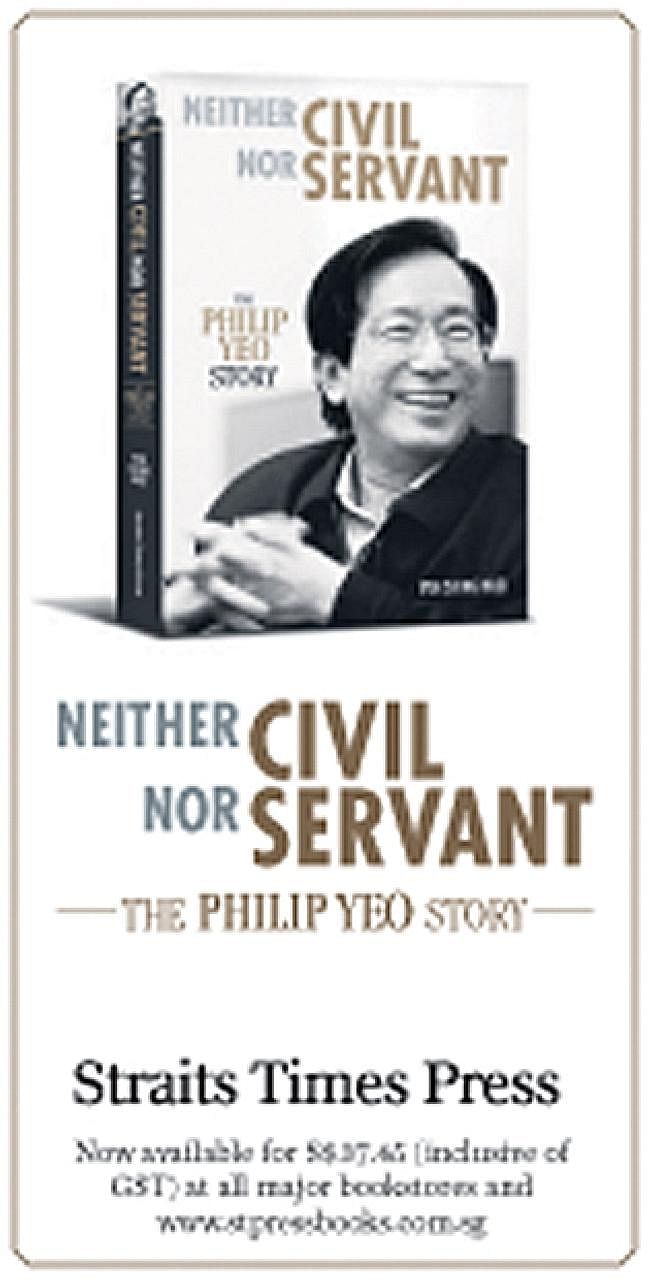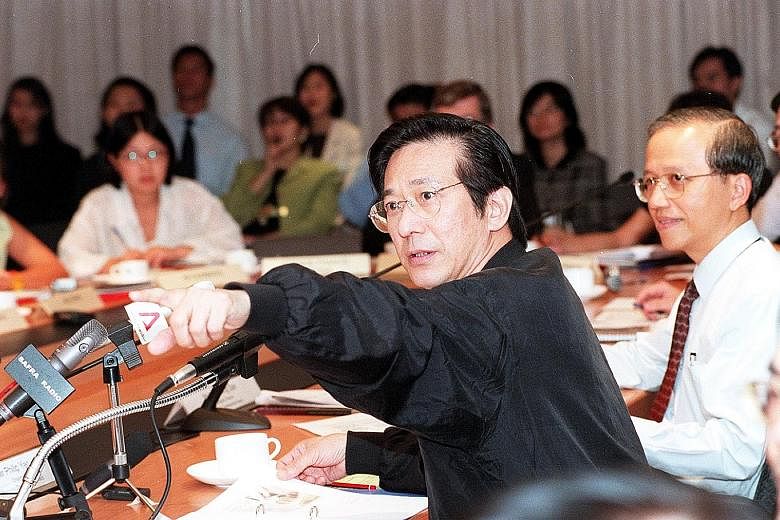By the mid-1980s, EDB had become "complacent and bureaucratic" and had acquired some "dead wood", wrote Edgar H. Schein in his book Strategic Pragmatism: The Culture Of Singapore's Economic Development Board.
Yeo's entry was meant to shake up the board and, by extension, the economy. He was an unusual choice. The past five EDB chairmen had all spent some of their working career within the EDB. Even though Yeo had been a board member for four years, he had become chairman as an outsider, observed Schein. He added: "The appointment of Philip Yeo as chairman in 1986 was accompanied by a mandate to revitalise the EDB, to reposition its strategy in the new economic context, and to bring back more of the old entrepreneurial spirit."
Yeo, in his inimitable way, was a natural fit. In Heartwork, a book on EDB's success, prominent EDB alumnus Ng Pock Too observed that "whoever leads the EDB must be an entrepreneur, must have a strategic mind, must have guts". Yeo checked all the boxes, said tycoon Kwek Leng Beng.
In one of Yeo's first acts as EDB chairman, he signed off on an advertisement to be placed in The Wall Street Journal. The headline was: "Who would be mad enough to invest in Singapore in a recession?" It carried the signatures of nine global heads of multinational corporations , including Apple, Seagate and Motorola, saying "We are", "We are as well", and "So are we".
It was his first open embrace of an adjective which he was first labelled with in Mindef, and would be used with increasing frequency by observers in his career. Years later, The Straits Times would introduce his Jurong Island venture with the headline "Mad, Mad, Mad, Mad".
Behind the seeming insanity of the advertisement was a provocative appeal to restore and reinforce investors' confidence in Singapore amid the recession. Manpower Minister Lim Swee Say, an EDB old boy, said Yeo was the perfect man to dig Singapore out of the economic trenches. "The recession was tough, really rough. But you do not fear death when you work with Philip Yeo," he said. "In his lingo, 'we never say die'. No matter how difficult it was, he gave us the confidence that there was always a way out. When there's a big battle to fight, he will be there leading at the front."

It worked. Along with other measures pushed out by the authorities, Singapore rebounded from the recession quicker than expected. By the second quarter of 1986, Singapore's GDP had grown by 1.2 per cent and the climb continued to 3.8 per cent in the third quarter. The committee which examined the causes of the downturn, led by then Minister of State for Trade and Industry Lee Hsien Loong, laid out a plan for the EDB. On top of manufacturing, Singapore would also target services and local enterprises as part of its long-term growth. It also recommended the EDB to move into high value-added industries like chemicals, biotechnology and pharmaceuticals.
Yeo, the new czar of industries, used the blueprint to get to work. It helped that unlike his EDB predecessors, he controlled a vast empire, stretching from the public sector and into the private state-linked companies. He did not function simply as EDB chairman. He moonlighted in other roles too, continuing the "part-time" work habit which he had started since his Mindef days.
During most of his EDB tenure, he was concurrently running the Singapore Technologies (ST) group and later on Sembcorp Industries. His experience with ST group, which was diversifying from defence, helped open doors to his new job as the EDB boss. At the same time, his calling card as the Singapore Government's representative provided more opportunities for ST group and Sembcorp. The development of Batam is an example.
"EDB had no resources for a lot of things," he said. "I used all of my Singapore Technologies expense account for my travels and used those trips to take care of EDB's affairs. I was using ST to help EDB. I was a government representative doing business. EDB and ST were my left hand and my right hand."
The blurred lines suited the shape shifter perfectly. One could even call it Yeo's modus operandi, similar to that of his defence days, when he was not only the maker, but also the seller and buyer of weapons.
Such ambidexterity helped him achieve his mission: to create jobs. The annual target was 20,000 jobs for Singapore's school leavers. As he said in the EDB 1992-93 annual report: "The charter of the EDB is broad, yet clear - to create good jobs. Economic development means job creation. Jobs create prosperity and the rest, such as quality of life, will follow. If you have no jobs, there is no quality of life to speak of, no higher standard of living to aspire to."
EDB managing director Tan Chin Nam said: "Philip Yeo's mission was very simple - jobs, jobs, jobs."
Yeo was relentless in his quest and expected his staff to do the same. He travelled extensively across the world, sold Singapore like "a pimp" (in his own words) to multinational corporations and worked tirelessly to find jobs for Singaporeans. "He was probably the best-travelled chairman EDB ever had. He never stopped," said David Lim, another well-known EDB old boy.
The Philip Yeo brand of insanity drew as many critics as adherents. Current EDB chairman Beh Swan Gin said that there are many from the EDB alumni who regard themselves as "Philip Yeo loyalists". "We did our best to support him in whatever it was that he put his mind to," he said. "It wasn't just about obligation because we benefited from him … it's (about) the leadership values that we learnt from him, because he was one boss who backed you, who gave you autonomy. He'd been right many, many more times than he had been wrong and his intentions had always been for the good of Singapore, for advancing Singapore's cause. So it's very easy to be a Philip Yeo loyalist."
In 2010, in a replica of the famous Wall Street Journal advertisement, his officers past and present put together a mock advertisement with the headline "Who would be mad enough to work for Philip Yeo?" There were 13 signatories, including then labour chief Lim Swee Say, David Lim, Tan Chin Nam, politicians Josephine Teo and Lee Yi Shyan and JTC chairman Manohar Khiatani among others. They were all part of Yeo's EDB mafia.

